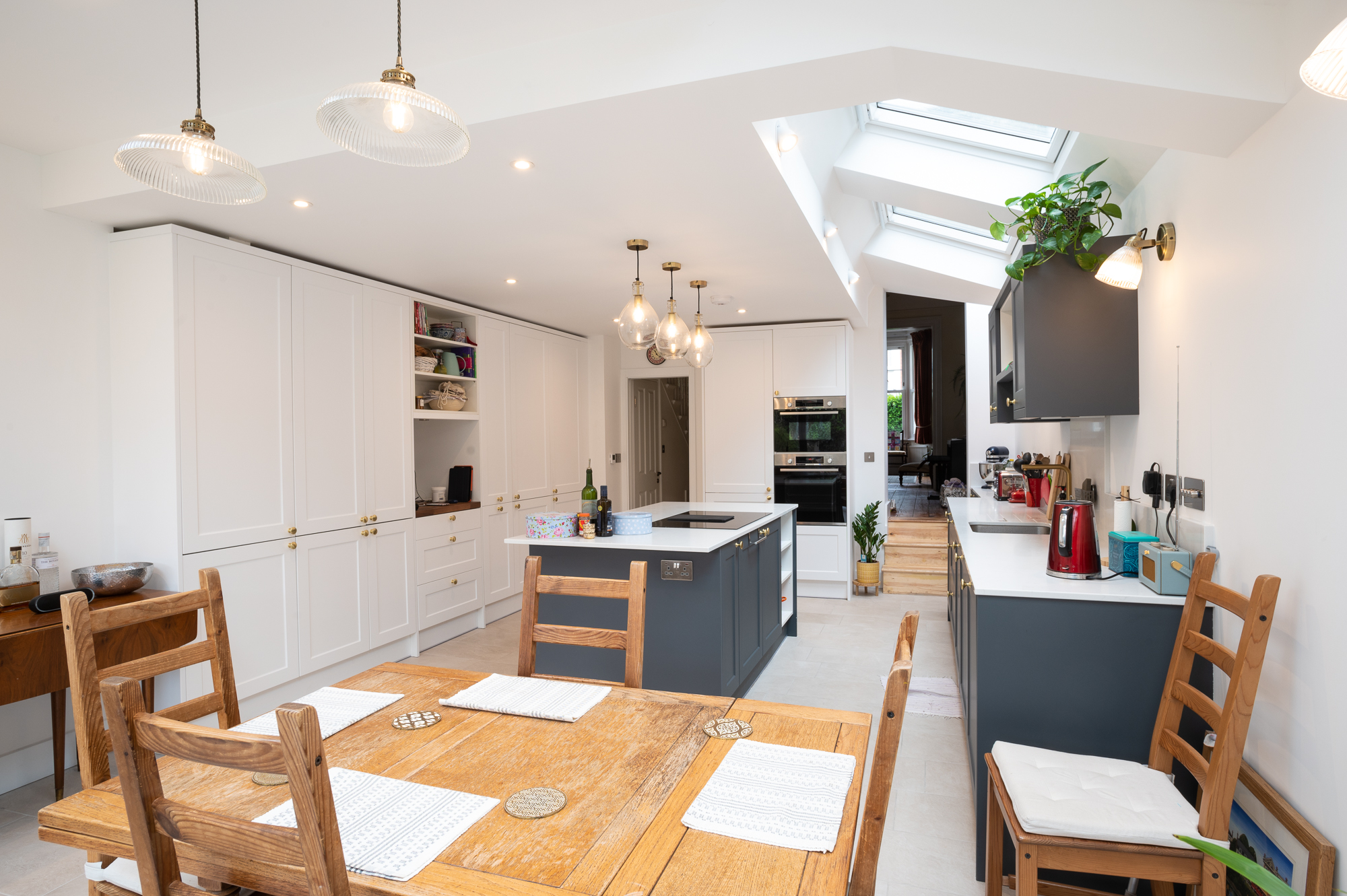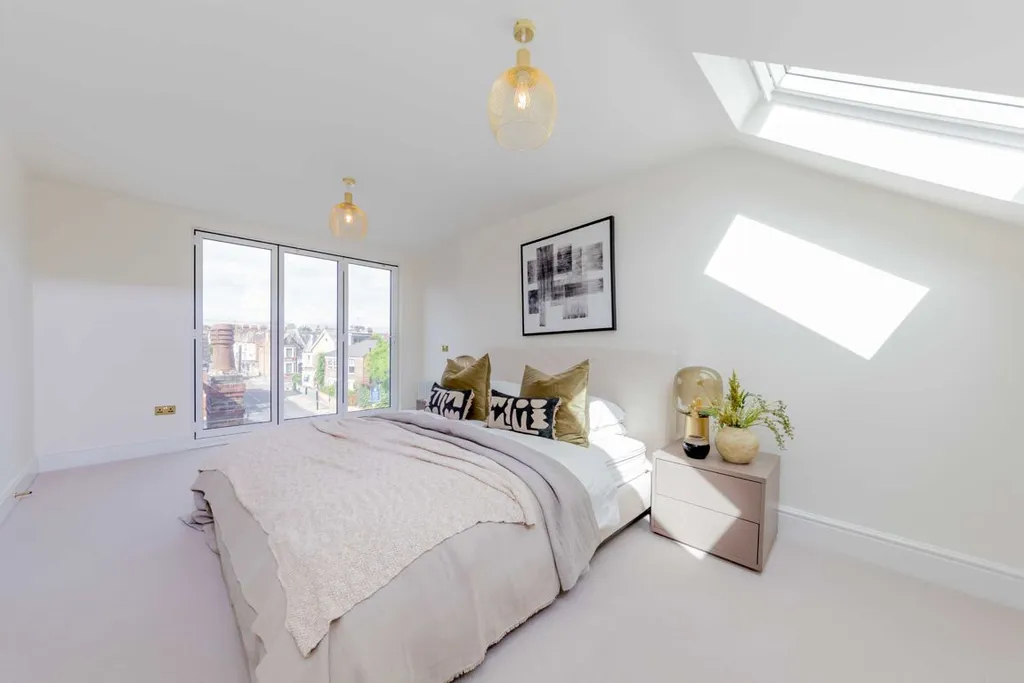Extensions allow homeowners to expand their living spaces, upgrade their homes, and redesign their favourite rooms to match their ever-evolving lifestyles, all without moving houses. And best of all? They can be tailored and customised to meet each home’s and every homeowner’s unique requirements, making them a firm favourite in home renovation projects.
Glass box extensions are the latest in a long line of architectural innovations that add style and sophistication to home extensions. Though viewed as a modern design concept, glass box extensions help homeowners maximise the use of natural light and outdoor areas to create bright, airy spaces that fit as easily into the traditional build as they do in the modern home.
What is meant by a glass box extension?
A glass box extension is essentially a type of addition that is largely constructed using glass or transparent materials, creating an innovative extension that seamlessly blends indoor and outdoor spaces.
Allowing for abundant natural light and panoramic views, glass box extensions provide a sleek and striking appearance that offers a sense of openness and transparency that translates into style and spaciousness within the home.
What are the things that need to be considered when designing a glass box extension?
While a glass box extension invariably adds elegance and space to your home, designing it involves careful consideration of various factors to ensure both functionality and aesthetic appeal. Here are some of the key things to consider:
1. Design harmony
It is crucial to ensure that the design of the glass box extension complements the existing architecture. This can be achieved through the creation of transitional spaces, maintaining consistent rooflines, or even integrating details such as trims that are present in the existing building into the design of the glass extension. All of this provides a sense of continuity and connection.
2. Size
The size and scale of the glass box extension must be designed to be proportionate to the original structure. This helps prevent the creation of an imposing glass structure that overwhelms the existing building.
3. Materials used
A key factor in the design and building of an extension is the materials utilised. The materials must not only align with the rest of the house but must also be chosen according to the functionality of the extension.
For example, low-iron glass is ideal for extensions that want to highlight outdoor spaces, while solar control coatings are a great option for extensions that receive a large amount of sunlight throughout the day.
Details such as framing and finishes are also crucial to help create a cohesive and aesthetically pleasing look.
Most importantly, the materials chosen must fit into the budget of the extension.
4. Energy efficiency
Insulation and energy efficiency are obvious concerns for glass box extensions. Therefore, it becomes essential to use high-quality, energy-efficient glass to regulate temperature and reduce energy consumption.
Incorporating highly glazed glass and installing adequate insulation ensures that the space remains comfortable throughout the year.
Effective ventilation can also help prevent overheating, while integrating smart climate control systems helps regulate the temperature within.
5. Orientation
Consider the orientation of the glass extension to maximise natural light while minimising overheating. South-facing extensions, for example, receive abundant sunlight throughout the day. However, they are also prone to overheating and would require shading solutions such as electrochromic glass or blinds.
The position of the glass box extension is also a vital factor in determining its function based on the views it provides and the amount of privacy it offers.
6. Planning regulations
Most glass box extensions will not require planning permission, provided that they meet the specific criteria and size requirements of permitted developments and are not listed in conservation areas.
However, homeowners must apply for and secure building regulations approval to ensure that every aspect of the extension build complies with building guidelines and standards.
7. Functionality
Naturally, the eventual purpose and function of a glass box extension play a major role in its design and build. Whether it is to be used as an office, playroom, or even as additional living space, the layout and features should align with the intended function of the space.
What are the best design ideas for glass box extensions?
Creating the ultimate glass house extension involves combining innovative design with practical considerations for comfort and functionality. Here are some design and inspiration tips:
- Maximise views of the surrounding landscape to create a seamless connection between indoor and outdoor spaces.
- Consider landscaping elements that complement the glass extension, such as gardens or outdoor seating areas. This allows for the creation of the perfect space for relaxation or for entertainment.
- Opt for frameless glass or minimalistic framing to enhance the sense of openness and allow unobstructed views.
- Use floor-to-ceiling glass panels to create a striking visual effect and maximise natural light.
- Incorporate smart glass technology that allows for adjustable transparency, providing control over privacy and sunlight exposure.
- Explore options like electrochromic glass that can be electronically tinted to control the amount of sunlight (and heat) passing through.
- Consider a glass roof with glass beams or a combination of glass and other materials to create a unique and dynamic architectural feature.
- Incorporate skylights for additional natural light without compromising privacy. These are also great when working on a tighter budget.
- Integrate sustainable features, such as energy-efficient glass, solar panels, and green roofing, to minimise the environmental impact.
- Use natural ventilation and shading strategies to reduce reliance on artificial climate control.
- Consider a double-storey glass extension. It creates the incredible illusion of a floating structure while also bringing in lots of light throughout the house.
- Ensure the interior design complements the modern and open feel of the glass extension.
- Use a cohesive colour palette and minimalist furnishings to maintain a clean and contemporary aesthetic.
- Design a flexible interior layout that accommodates various functions, allowing the space to adapt to changing needs.
- Use sliding or bi-folding glass doors to open up or partition off areas as desired.
- Explore creative lighting solutions to enhance the ambience during the evening. You could also consider pendant lights, recessed lighting, or LED strips to highlight architectural features.
- Incorporate statement elements, such as a central glass-enclosed fireplace or a unique sculptural piece, to add character to the space.
- Use high-quality materials, such as steel and natural stone, to create a luxurious feel.
- Integrate water features, such as a reflecting pool or fountain, to add a sense of tranquillity and enhance the connection with nature.
- Install underfloor heating or cooling systems to maintain a comfortable temperature year-round.
- Implement innovative privacy solutions, such as switchable glass or motorised blinds, to control visibility as needed.
- Incorporate home automation and smart technology to control lighting, temperature, and security.
- Use creative finishes or textures to add visual interest to the glass surfaces.
Stunning, functional, and comfortable, glass box extensions are magical additions.
Not only do they help increase the living space and value of your house, but they also create a seamless connection between the old and the new, the outdoors and the indoors. Allowing you to experience the beautiful views, embrace the changing seasons, and revel in nature, all from the comfort of a beautifully designed indoor area.
Add space, style, and value to your home through incredibly designed extensions. Contact the extension experts at Good Design and Build today!
At Good Design and Build we pride ourselves in offering you a complete solution, from design to build. See our recently completed projects, get inspired, and start your dream home journey with us today!




